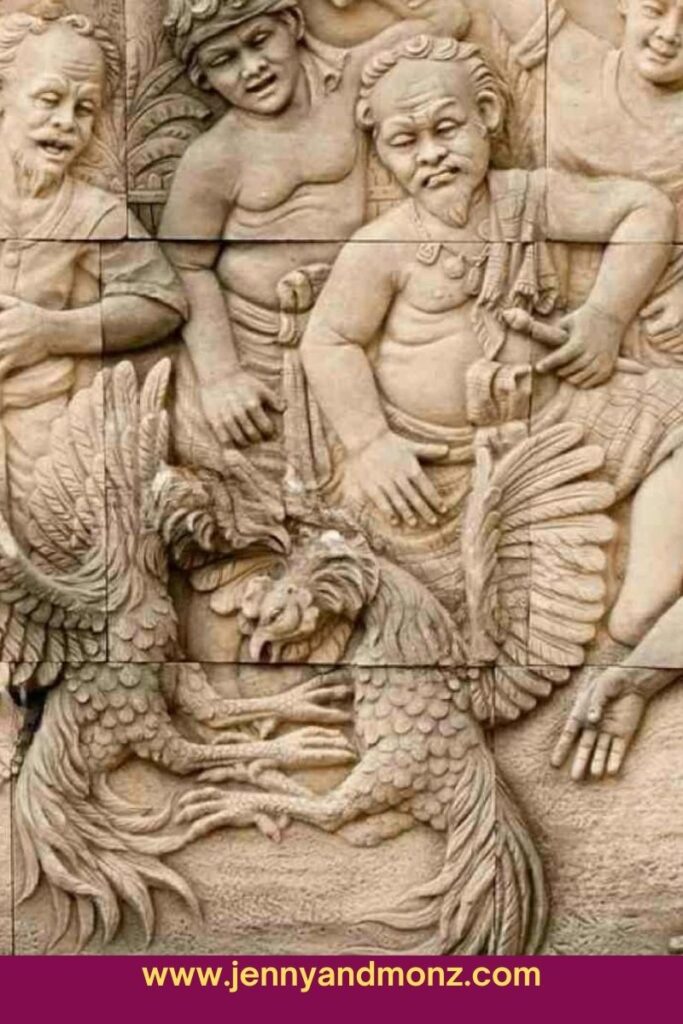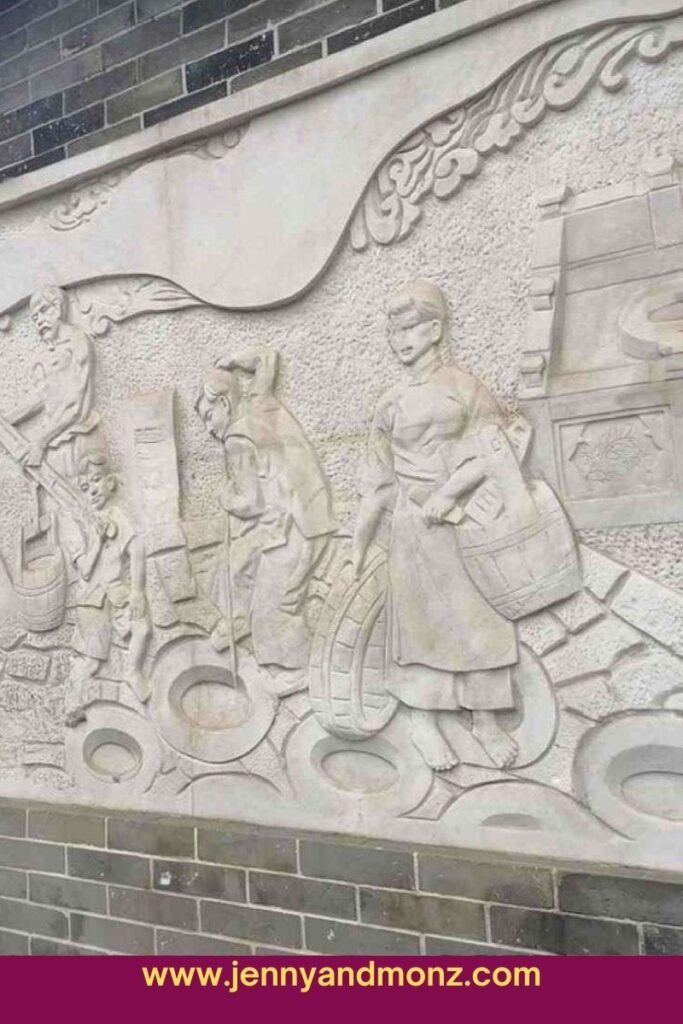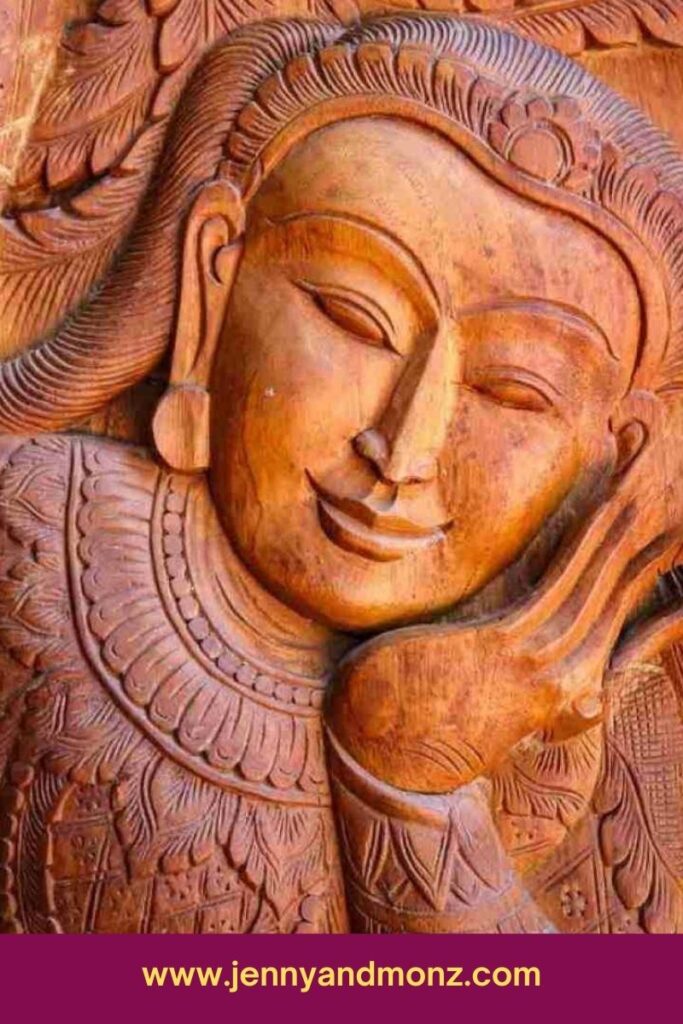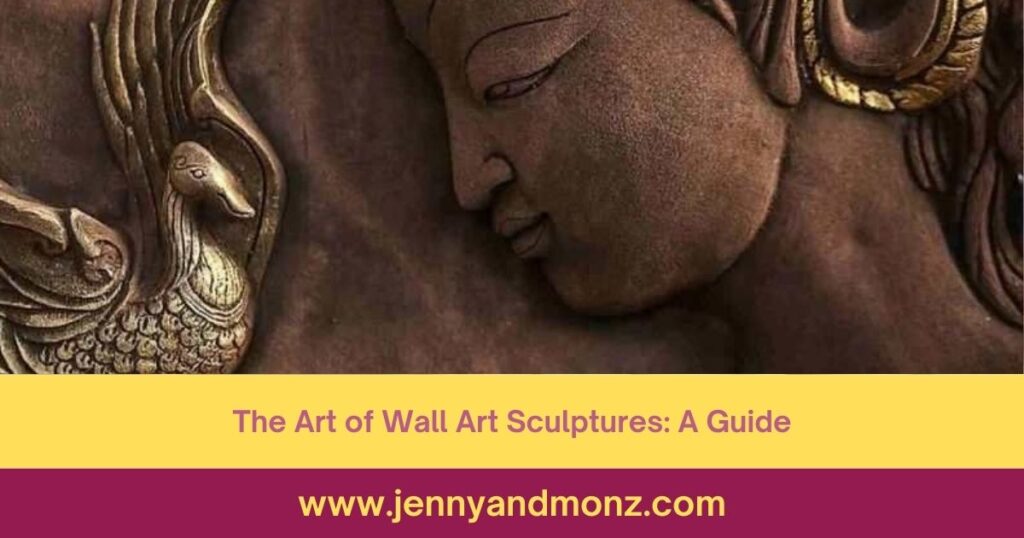Welcome to the fascinating world of sculpture, where art transcends limitations and enters the third dimension. Sculpture is a medium that compels us to investigate, touch, and feel the narratives it tells via form and space. In this guide, we’ll travel through the fascinating world of wall art sculptures, where imagination has no limitations. These sculptures embellish our rooms, giving them depth and personality. Beyond home accents, they are windows into the creator’s creativity.
Table of Contents
Sculpture: What Is It?
The definition of sculpture is an artistic medium used to create 2.5D or 3D works of art. Most sculptures have a few things in common that make them all similar. One is that sculptures are 2.5D or 3D; they can be in-the-round, in which case they are not attached to the background, or they can be reliefs, in which case they are somewhat related to the background. Another essential feature of sculpture is that, since it is three-dimensional, sculptors can explore the creative element of form more than artists working in other media.
Where Did The Words “Sculpture” And “Sculpture Art” Come From?

The Latin term “sculpere,” which means “to cut, to carve, or to engrave,” is the root of the English word “sculpture.” The term “sculpture” and the art form are both ancient. As early as the 14th century, “sculpture” was used. Over time, it changed to reflect the numerous romantic languages of Europe. There is historical evidence of sculpting as an art form from all across the world. Egyptian sculptors created a wide range of figures in ancient Egypt, from tiny ornamental figurines to masterpieces like “The Bust of Nefertiti,” made between 1352 and 1332 BCE, to gigantic sculptures and reliefs the size of mountains.
In China, tens of thousands of terra cotta warriors who date back to 221 BCE defend the tomb of Qin Shi Huangdi, the country’s first emperor. Some of the most skilled sculptors in history include the Greeks and Romans, who created masterpieces like the Venus de Milo and the Artemision Bronze. One of the most well-known sculptors of all time, Michelangelo, created masterpieces throughout the European Renaissance, including David in 1504 C.E.
What Distinguishes Sculpture from Other Art Forms?

Scholars and artists have been attempting to explain what sets sculpture apart from other art forms for a long time. A well-known art critic named Gottfried Lessing authored a book in 1766 that examined the differences between various types of art and what they symbolized in daily life. He discussed the aesthetic merits of two representations of the same narrative: the sculpture Laocoon, created in Greece between 323 BCE and 31 C.E., and the Virgilio poetry “The Aeneid”.
Before Lessing’s work, it was accepted that an artist would pick a medium that naturally expressed that trait to depict specific characteristics, such as movement or a moment in time. A poem, song, or play might be written to describe movement or the passage of time, but a painting or sculpture might be made to illustrate a static moment in time. This allowed many artists to challenge these aesthetic norms and produce kinetic sculpture, a form of sculpture that moves.
Types of Classical Sculpture on Material basis
The main types of classical sculpture are four (4) as follows:
| Sr. No | Type of Sculpture | Defining Type |
| 1 | Bronze casting | Since ancient times, jewelry, sculptures, and kitchenware have been made using metalworking procedures like bronze casting. Bronze hardens in a mold after being poured into it. |
| 2 | Stone carving | Stone carving involves carefully removing and molding unpolished natural stone fragments. Stonework from prehistory has survived due to its resilience. |
| 3 | Wood carving | To construct a wooden figure figurine or sculptural embellishment, wood carvers employ a cutting tool in one hand, a chisel in two hands, or a chisel and a mallet. |
| 4 | Clay firing | Firing heats clay and glazes. The piece is heated until the clay and glazes are “mature”—that is, at their optimal melting point. |
Types of Sculptures on Method and Product basis
Throughout history and the present, various sculptures have been created. Relief sculpture, additive sculpture, subtractive sculpture, and casting sculpture are the four most popular types of sculpture. These varieties vary in approach and result, but all comprise a crucial technique that all sculptors apply.
| Sr. No. | Sculpture Types | Defining Types |
| 1 | Relief sculpture | Relief sculpture is attached to the background material on one side. The opposite of sculpture in the round, which is a sculpture that is entirely isolated from any context, is relief sculpture. |
| 2 | Additive Sculpture | The term “additive sculpture” is a technique for creating sculptures that involves layering materials to create a structure and pattern. |
| 3 | Subtraction Sculpture | A sculpture technique known as “subtractive sculpture” entails the removal of material. |
| 4 | Casting Sculpture | Casting is the technique of making a three-dimensional replica of an original sculpture or model out of a moldable substance, usually clay, wax, or plaster. |
· Relief Sculpture

The background material attaches a sculpture known as a relief sculpture on one side. Relief sculpture is the opposite of sculpture in the round, as it is a sculpture that is not isolated from any context. Relief sculpture fuses 2D and 3D media and is renowned for its art form. People frequently view relief sculpture from a single angle since it integrates with the surroundings, just like paintings. But because the artist sculpts the topics and adds texture to the work, it becomes a type of sculpture.
The two primary genres of relief sculpture are high-relief and low-relief sculptures. High relief sculpture carves more deeply into the surface material compared to low relief sculpture, which has not been carved as profoundly. Ancient cultures, including those of ancient Egypt, Asia, Greece, and Rome, frequently used relief sculpture to depict narratives on the sides of temples and other structures. Today, we feature a diverse relief sculpture that showcases many exquisite pieces.
| Sr. No. | Types of Relief Sculpture | Defining Types |
| 1 | High relief sculpture | High relief sculpture is defined as relief sculpture that has been carved more deeply into the surface material. |
| 2 | Low relief sculpture | Low relief sculpture has not been carved as deeply. |
· Additive Sculpture
The term “additive sculpture” is a technique for creating sculptures that involves layering materials to create a structure and pattern. Modeling and casting processes are examples of additive sculpture techniques. Modeling is building a soft cloth, like clay or papier mâché, to produce a design. When working with clay, adding clay pieces to existing structures and clay layers is frequently necessary to create a finished design. When layers of paper and glue or plaster are placed on a frame or further layers of paper, paper mâché is remarkably similar to clay sculpting. Readymade or found object sculpture is a different category of additive sculpture. It is well known that Marcel Duchamp created the idea of the readymade.
· Subtraction Sculpture
A sculpture technique known as “subtractive sculpture” entails the removal of material. Sculptors can also use modeling techniques in subtractive sculpture because they occasionally remove clay or other soft materials during the sculpting process, in addition to carving.Using chisels, knives, gouges, and hammers, carving techniques remove material to reveal a design. Carvers commonly use wood and stone as the two most common materials in carving techniques because they can both be sculpted easily and maintain their shape when carved.
· Casting Sculpture
Casting is the technique of making a three-dimensional replica of an original sculpture or model out of a moldable substance, usually clay, wax, or plaster. In this process, you pour a liquid or molten substance, such as metal or resin, into a mold, let it set, and then remove the mold to reveal the finished cast sculpture.
Common Types of Wall art Sculptures

Handcrafters create the most authentic examples of wall style using natural materials. One considers glassware realistic because it is made from glass. Although people predominantly create wooden sculptures and paintings, they also make sculptures and paintings out of stone and ceramics.
Using alternative media such as stucco, epoxy resin art, and 3D printing has created waves in recent years. These methods are synthetic substitutes for all-natural components with the same result. Home furnishings are increasingly incorporating 3D printing projects that machines entirely, transitioning from the realm of fine art.
People often modify natural materials to enhance their aesthetic value. To this purpose, epoxy resin serves as a great example. Nonetheless, people employ much of what the natural world provides.
How Do 2.5D Wall art Sculptures Work?
A 2.5-dimensional piece will include what an artist frequently calls relief art. Although it is a sculpture, the rendering is relatable, like braille. The piece creates a contour on the surface but is not standalone. As the artwork has risen from the surface, the hands may feel it.
These kinds of artwork are ideal for walls. They do not block high-traffic zones by sticking out into walking spaces. It impacts and affects art distinct from those found in 2D works like paintings, drawings, or prints.
The ability to present alternative media inside the home is an added benefit. This can include printed or wood things. When it comes to art, wood, clay, or glass are most prevalent.
When done by a skilled craftsman, the wood grain has a natural beauty. The production procedure utilizes uncommon wood species. This increases the cost of the medium.
The same is true of clay when an artist creates it. Not all clays are created equal, and neither are the products of expert hands’ work. Pottery occupies a distinct position in the arts.
When created by a true artist, glass also has an incredible touch. These pieces are frequently standalone 3D objects. However, a lot of people continue to create art for walls.
Each minimizes the footprint while delivering the most distinctive aesthetic possible in a 2.5D wall sculpture. They are ideal for giving your home decor an attractive edge.
Caution: Do Not Mount Large Sculptures

This has major significance. Obviously, you don’t want to hurt anyone due to falling of sculpture. Some of these things are strange. When in doubt, weigh them before purchasing the proper hardware.
In terms of what hardware can sustain and still allow you to place almost anywhere on a wall, there are a ton of possibilities available today.
Although not usually necessary for mounting, wall studs are nice. If used correctly for some products, toggle bolts can work miracles. If you need a lag bolt, your house must have some serious interior design. Just make sure to have fun with responsibility.
The Significance Of WALL ART Sculptures For Us

- Sculpture is a thing like us that coexists in the world with us.
- Sculpture challenges the line between thoughts and things, subjects and objects. It thinks with things or considers how things think.
- Sculpture is promiscuous, errant, and finest when misbehaving.
- Sculpture requires practice, dangerous activities, a lot of doing and a little undoing.
- Sculpture explores the other side of the commodity object by probing our relationship to it. A form of art that explores alternative ways of feeling and thinking.
- Sculpture is a master of pretension; it is a fabrication that highlights our desire for fiction and artifice. We have art, so the truth won’t kill us.
- Sculpture links concepts, expresses subjectivities, and forges communities.
- The location, society, and era of a sculpture are all reflected in it. Our moment.
- Wall art sculptures negotiate material facts and conflicting, intertwined fictions.
- Inconvenience, difficulty, and the unexpected are all aspects of sculpture.
- To use sculptures for commercial reasons, government propaganda, or local gentrification,it doesn’t require the label of “excellence” . Keep in mind the virtue of making without purpose. Art is a way of life, not a thing.
- A sculptor lives entirely.
Wrapping Up
One thing becomes abundantly evident as we come to a close with our investigation of the wall art sculptures: sculpture is an ever-evolving, limitless canvas of human invention. It has persisted and prospered, capturing hearts and minds from ancient civilizations to contemporary advancements. If timeless classics or the cutting-edge masterpieces of today attract you, let sculptures bring life to your surroundings by reminding us that art is not only something we witness but something we profoundly experience, touch, and connect with. It’s a celebration of human expression, and the powerful storytellers of this enduring epic are wall art sculptures.
To access the entirety of the blog’s information in visual form, take some time to watch the video presentation.
Frequently Asked Questions (FAQs)
· What Components Make Up wall art Sculptures?
Line, space, mass or volume, shape, value, color, rhythm or repetition, continuity, balance, texture, and proportion are key components that characterize sculpture and other 3D works of art. Most sculptures will incorporate some, all, or several of these.
· What aspect of sculpture is most crucial?
Representation is one of the most crucial of these. Prior to the twentieth century, sculpture considered as a representational art that mimicked natural shapes, most frequently human figures but also inanimate objects like games, utensils, and books.
· Which nation is renowned for its sculpture?
The cultures of the ancient Mediterranean, India, China, as well as several others in Central and South America and Africa, are among those whose sculpture



